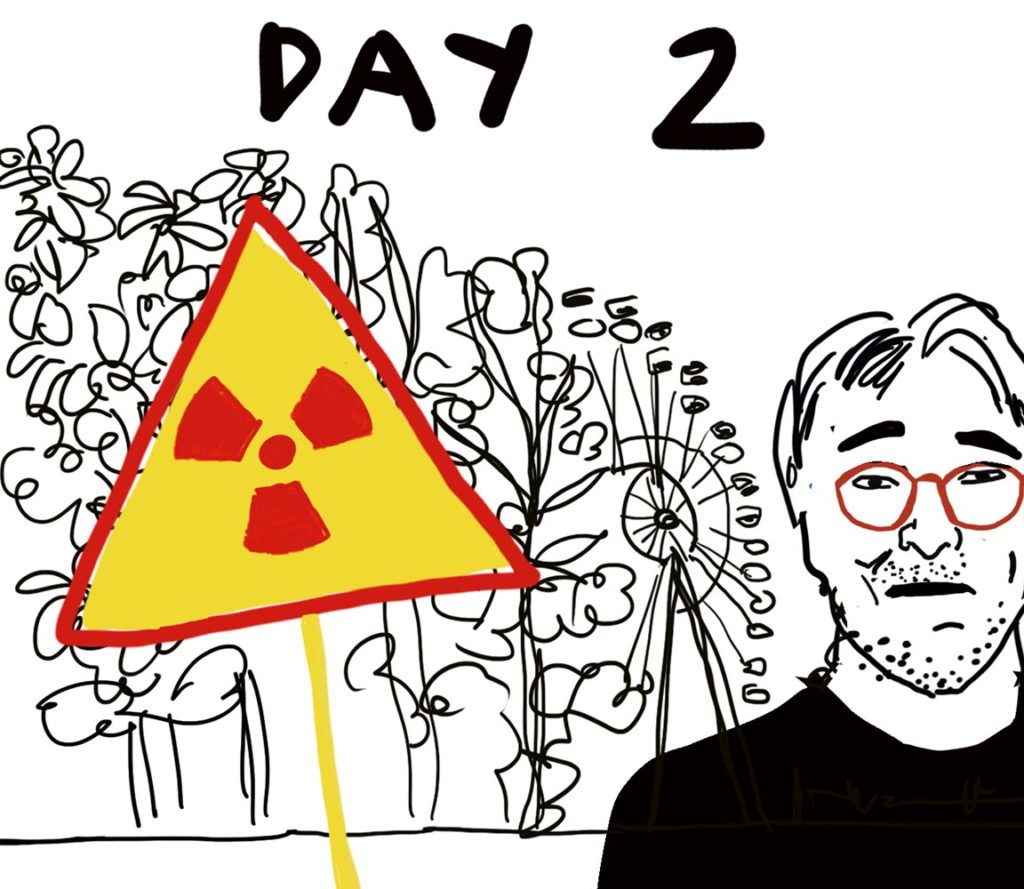
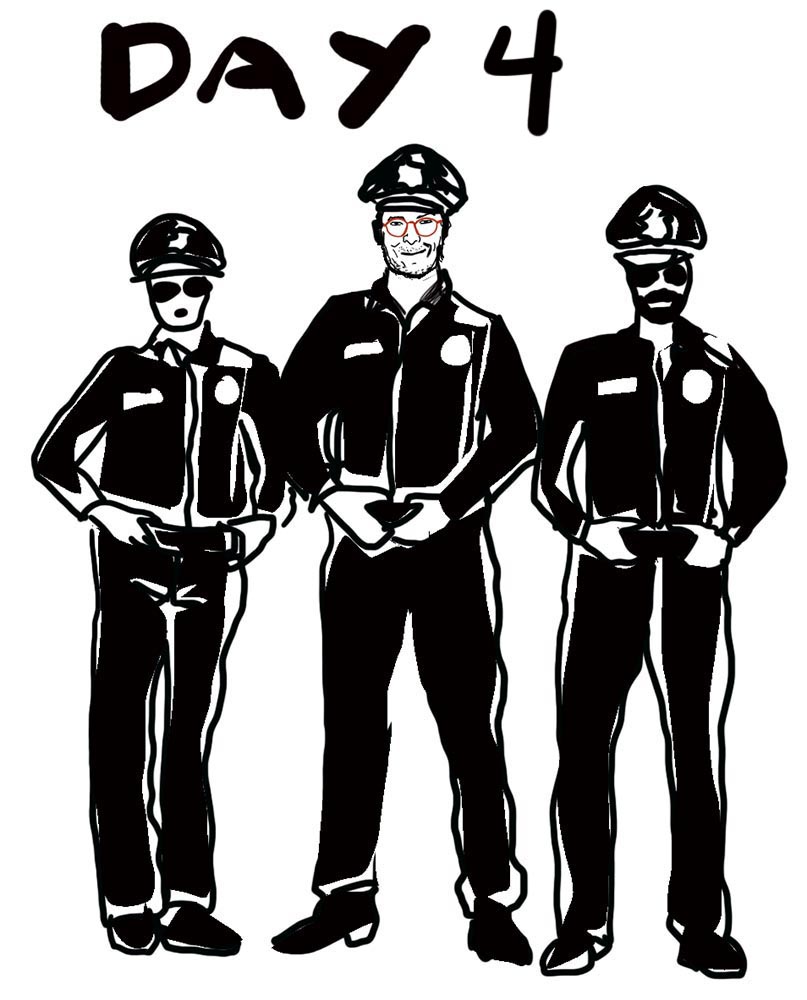
|
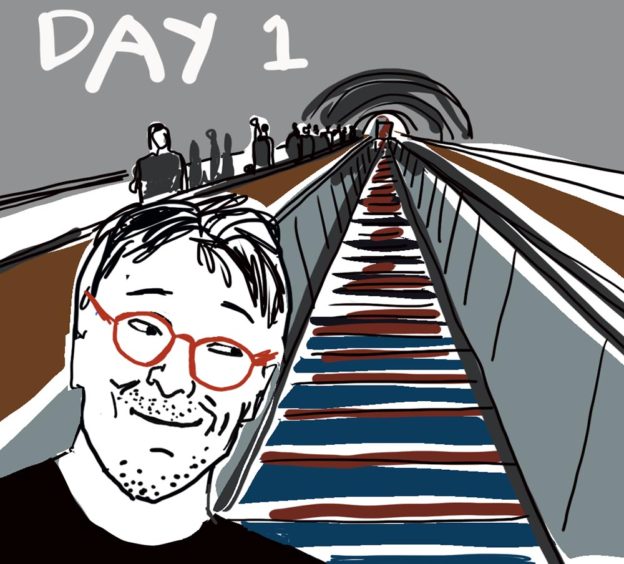




|
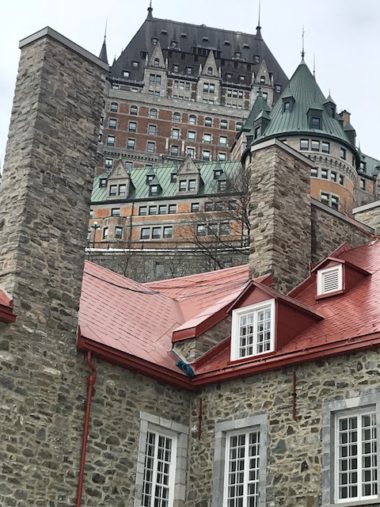
I am pretty well traveled. I have been to many places and love the city I live in, Boston. I’ve been to the countries that abut our US borders and have loved both Mexico and Canada but I had never been to Quebec City until recently.
Getting to Quebec City is a bit complicated. There are no non-stop flights from Boston and the drive is long through New Hampshire and Maine. Still, no excuses. I needed to get there as quick as possible as I was only spending a little over 24 hours there. So off Michael, our Canada expert, and I went. We traveled on Porter Airlines over Toronto. I really loved Porter Airlines – plenty of leg room and the facilities in their waiting rooms are brilliant. Landing at Toronto’s Billy Bishop City Airport is one of the greatest landing strips in the world. It feels like you are literally in the parking lot of the Toronto skyline. It was a breathtaking landing! We then went on to Quebec City and colder climates. Quebec here we come!
Awestruck at Arrival
Quebec is a total French experience.
We grabbed a rental car and headed in to the city. The first stop was the small town on the banks of the Saint Lawrence River, Levis. We boarded the car ferry for the 10-minute crossing into Old Quebec. The river was a moving spectacle of floating ice. It looked like a sea of icebergs steadily moving along the rapid tide. The boat crushed through the chunks of ice as if they were not there. In the distance, there was the beautiful Chateau Frontenac; our hotel and main focal point for Old Quebec. We checked in and began our tour of Quebec. My rusty French was about to get a work out.

A Chilly Quebec
Quebec is simply a delightful small town. Its modern history stretches back to the story of the American revolution and the collapse of French colonialism and English domination. It is utterly French. Its language is authentic, old French and the cafes and restaurants boast this proud heritage.
We were visiting in the cold of winter. They estimate they get 16 feet of snow on average each winter here and it stays cold for many months. The snow stays too. But Quebecoise get used to it. There are toboggan runs and ski circuits, skating rinks and dog sleds, ice hotels and maple sugar shacks, and popsicles made from hot maple rolled along a snow tray. Which are delicious! There are even canoe races across the icy Saint Lawrence. Nearby ski resorts do not have the mountain height of the Rockies but they sure get the snow depth. And the snow is light and airy because of the cold. If the town is hunkered down with winter attractions, it is, according to Michael, also one of the great places to visit in its short summer. Music festivals and cafes spilling out onto the narrow cobble streets create a whole new Quebec. Today we would freeze but enjoy the funicular and some welcomed hot chocolate. The feast would come later at one of the great restaurants that occupy the citadel.
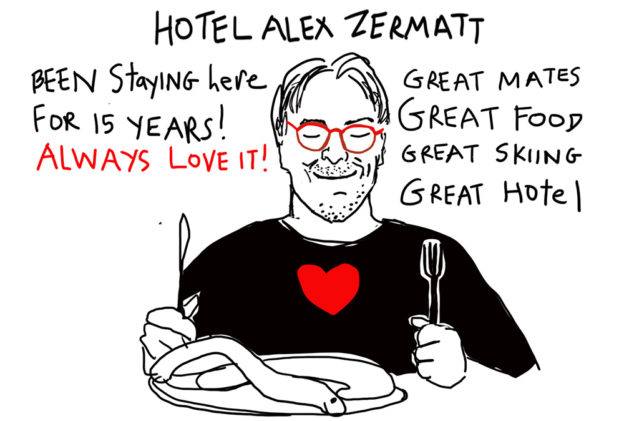
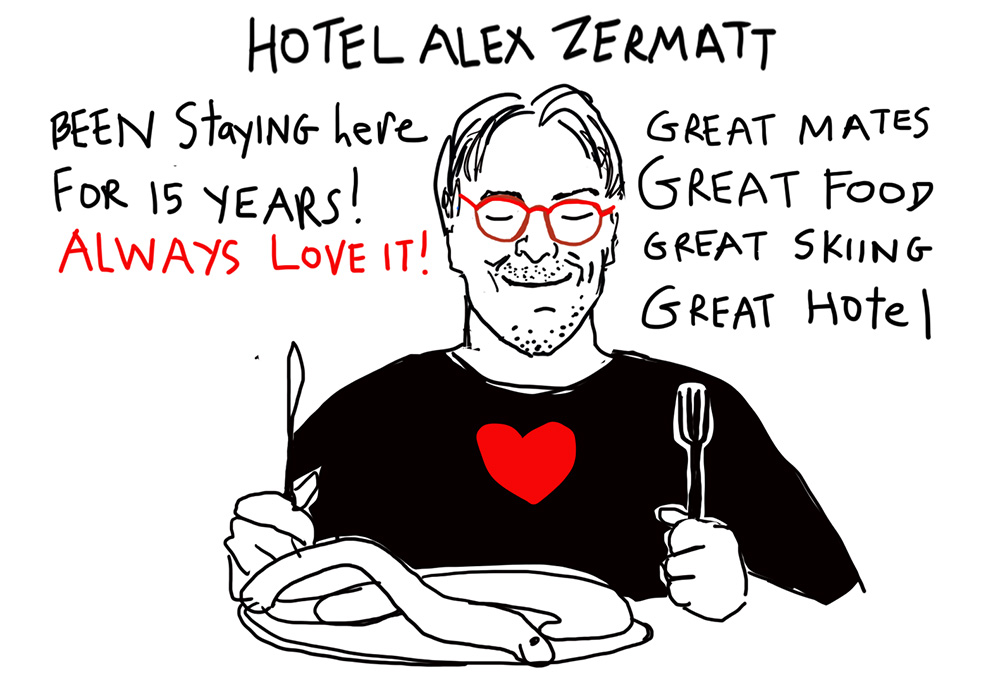
Routine and familiarity are comforting. I’ve been going to the same hotel, the Hotel Alex, in the Swiss Alps for 15 years. Same room, same friends, same everything. It’s a great place!
There is an order to the week. There are the owners that know us and greet us daily. There is the bar and the dinners all set out every night. It is a fixed menu that is beautifully crafted by a fabulous chef. There are special dinner nights like fish night when there is a fabulous array of smoked delicacies (Eel is my favorite. All of my childhood years of jellied eels created this addiction). Then there is cured meat night – a gourmands dream and as many types of mountain animals that your cholesterol can take! There’s raclette night when the owner of the hotel sweats over a raclette machine and serves grilled Swiss mountain cheese with potatoes and pickled onions. As much as you want. And these are just the appetizers! There’s always salad and always a fabulous dessert. Breakfasts are part of the extravaganza too. Yep, it’s a calorific buster off week. The skiing keeps the damage down but who is counting really?!
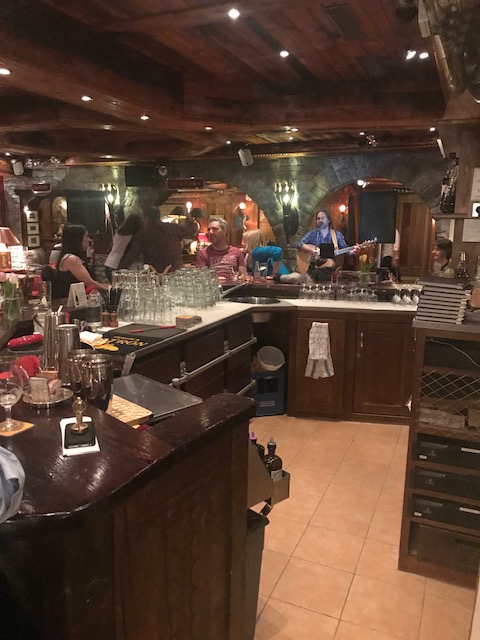
Apart from the food there’s this level of anticipation. Everyone looks at the map denoting ski runs open and weather reports from the top of the mountain. “What piste should I take today?” “Is Italy open?” They are always the same conversations. Reassuring. Then there’s the in-between time at the hotel. The spa and a swim before the dinner make it just a perfect week.
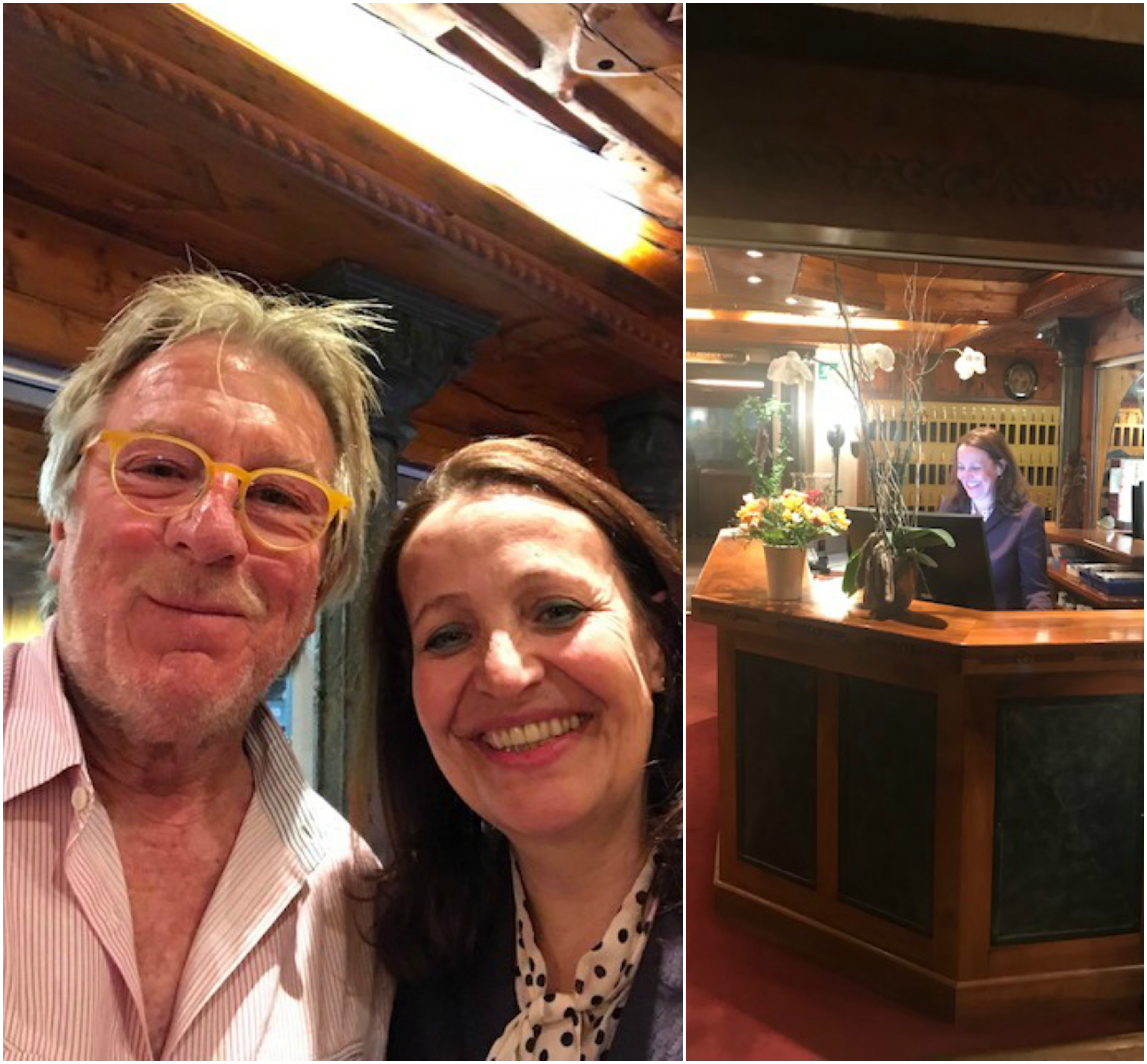
The people who work at the hotel are super nice. They get it. We’re all there to have a good time and escape. They smile and become part of the week.
The Hotel Alex is near to the main cog railway that takes you up the mountain and right by the main station that connects everyone to the real world down in the valley. It’s a bit like Brigadoon. For a week at least it works for me. More info on the Alex can be found on their website: Hotel Alex Zermatt. It is a surprisingly great deal and a fabulous four star hotel. Best in town. Best in show.
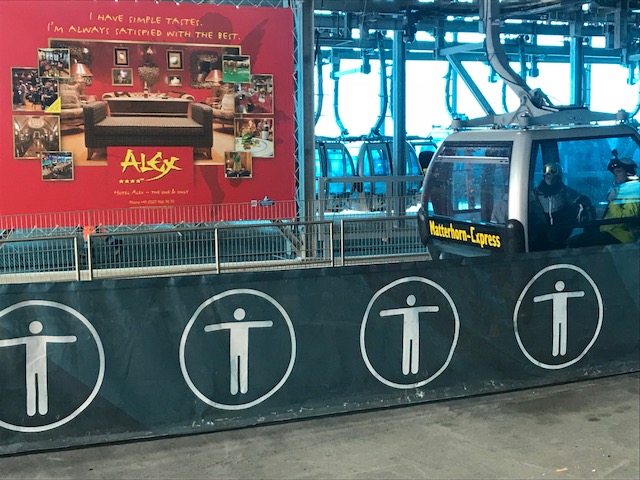
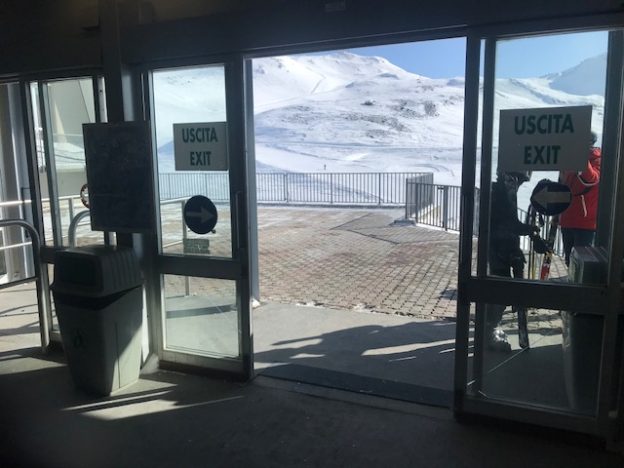
Today was so cold and the temperature at the top of mountain minus 40 Celsius. The cable car stalled every five minutes because of the temperatures. But…the sun was out and with seven layers and a balaclava I was ready.
We were going to ski Italy today.
The amazing thing about Zermatt is that you get two countries, two huge mountains and therefore two cuisines. Two cultures and frankly extreme cultural differences. On the Swiss side, all the lunch places are privately owned. On the Italian side, it’s local government concessions. Even the toilets are terrible on the Italian side because they don’t care to spend the money. They just lease the premises every three years. But, hey, it’s la dolce vita so who can knock that?! It’s rosti versus polenta. Let the games begin.
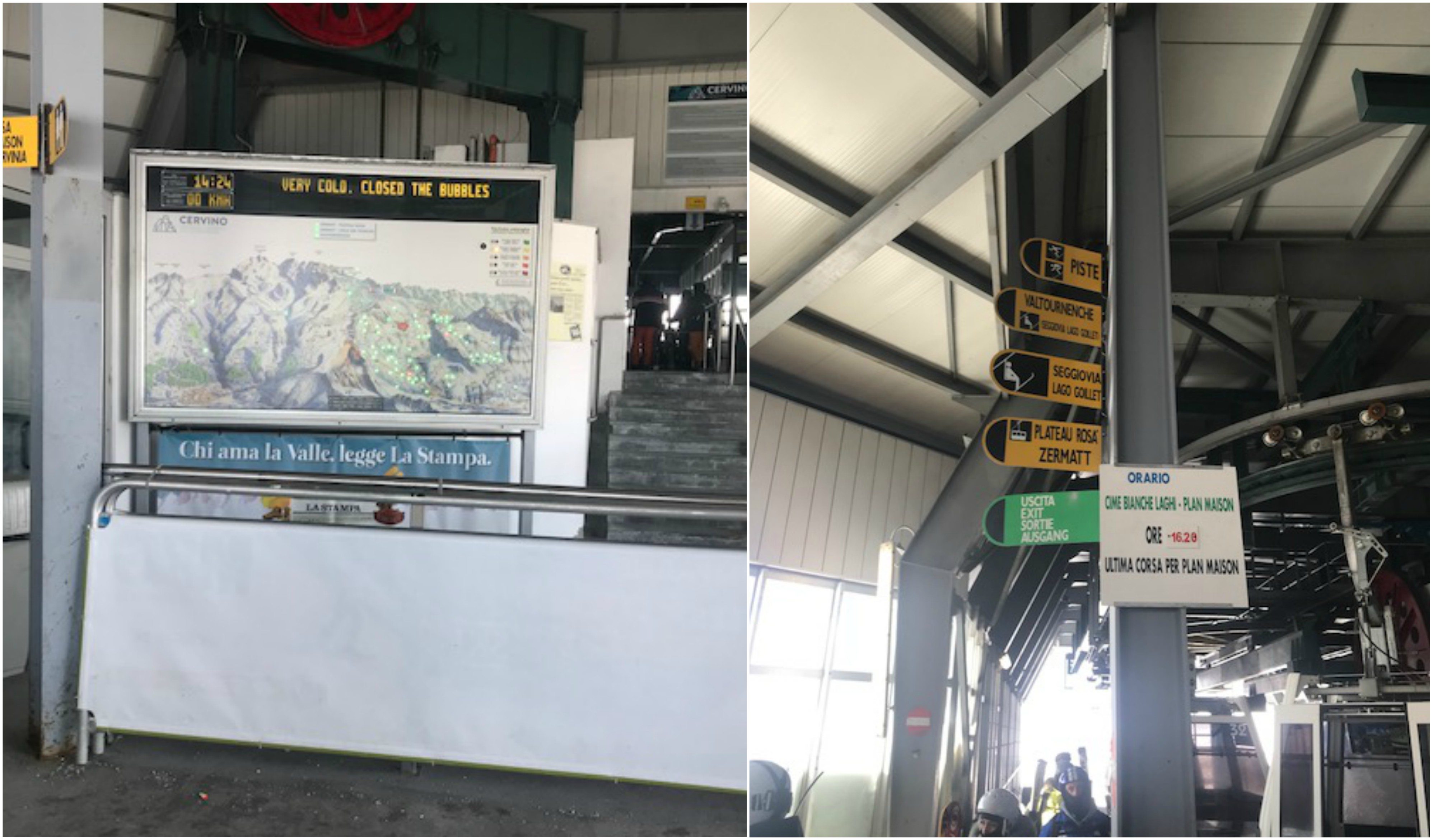
At nearly 13,000 feet, the Klein Matterhorn is the highest ski station in the Alps. It’s breathtaking. From there we took the one hour ski journey to Valtournenche, a town and commune in the Aosta Valley region of northwestern Italy. What a ride – 16 kilometers of winding ski terrain. It’s something everyone should try once in their life.

Lunch at the top of course would be polenta. The sun stayed on us all day and it was glorious.

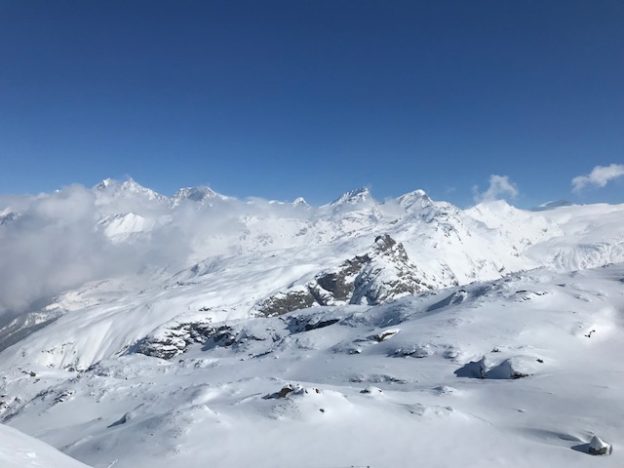
In Zermatt there are three choices to climb the Matterhorn mountain: The beautiful Gornergrat Railway, the funicular, and the Matterhorn Express Gondola.
The Gornergrat Railway is walkable from our delightful hotel, Hotel Alex Zermatt. It’s a sightseeing journey all to itself; 20 minutes climbing through spectacular scenery en route to the top. Skiers, hikers, and sightseers all share the train. It is literally, a trip, and worth taking.
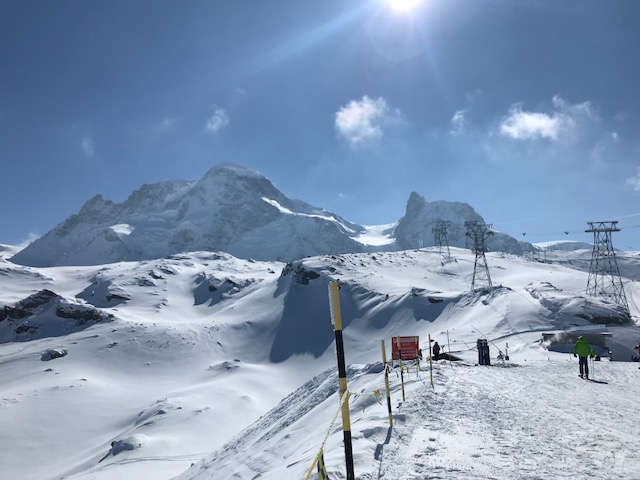
Today however, we grabbed an electric taxi to the Matterhorn Express station as the temperatures were super crazy cold. The top of the mountain is minus 15 Fahrenheit. They’re telling parents not to take the kids up. Cloud cover looked grim but we went for it. And then the sun broke through at 9,000 feet. Skiing had near to perfect conditions but so cold at high altitudes.
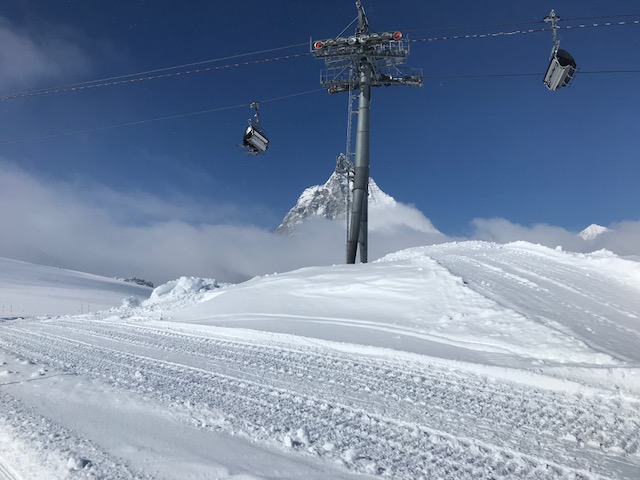
Zermatt is a paradise of choice where everything is connected. It’s huge and connects to Cervinia in Italy. The Matterhorn follows us everywhere we go. The sun stayed out all day. We skied all day. Old friends. Fun times!

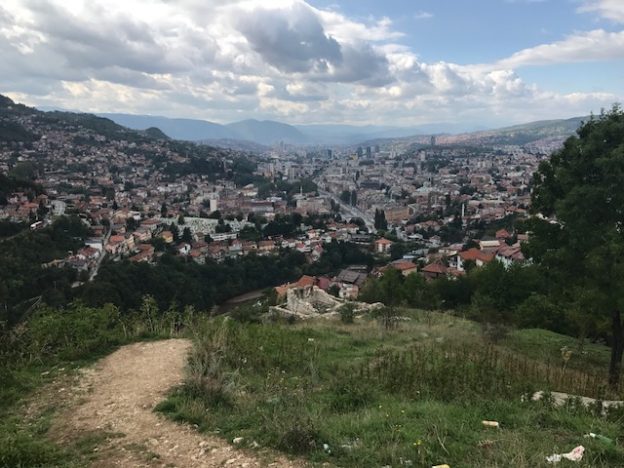
I am not sure why Sarajevo sounds so haunting but it simply has a beautiful lilt to the name. Nestled in a valley, it is one of the most extraordinary places you can imagine. The country of Bosnia and Herzegovina was one of the last dominoes to fall in the once powerful Ottoman Empire. Its strong Muslim culture is very much alive and vibrant today. The mix of history in this city is extraordinary, almost overwhelming. Imagine this – the first world war started here on the tiny crossroads in the center of town by the Miljacka River at the end of the Latin Bridge. That was in 1914 when Archduke Franz Ferdinand of Austria and his wife Sophie, Duchess of Hohenberg, were assassinated. That was one bad turn! You could say that the first world war begot the second world war and the second world war begot the expansion of the Soviet Union but more importantly, the emergence of Yugoslavia as a country. As the disintegration of the Soviet Union took place, so did the disintegration of Yugoslavia. Then all hell broke loose during the Yugoslav Wars in the 1990’s.
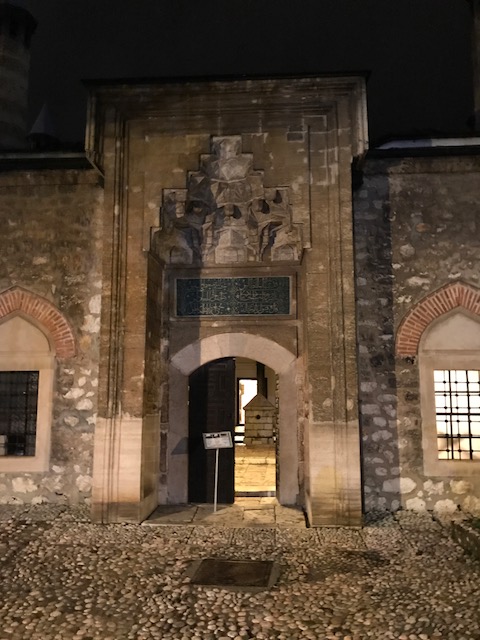
Sarajevo, the Olympic city of 1984, became a city under siege from 1992 until 1996. It was the longest siege of any capital city in the history of modern warfare. The siege lasted 1,425 days and about 14,000 people were killed, including over 5,000 civilians. It took the tragedy of the Markale marketplace massacre in 1994 for NATO to become involved and ultimately for the siege of Sarajevo to be ended. This was in 1996 – only 21 years ago. Now Sarajevo is one of the fastest growing cities in Europe and is ranked as one of the most popular destinations for tourists in 2017.
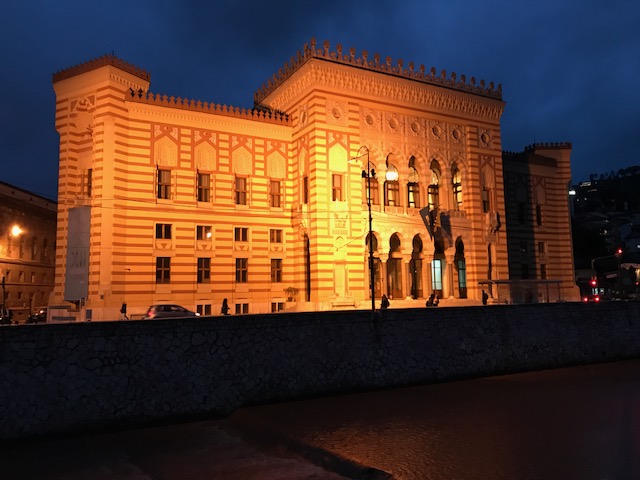
We walked by the town hall and library that was destroyed in 1992 by Serbian forces. Most of the important manuscripts and books were burned beyond recognition. Today it has become a monument to regeneration and reconstruction. To walk through the streets of Sarajevo, you are always reminded of the siege. We visited a tunnel by the airport where supplies were secretly shipped into town outside of the Serbian perimeter. It was the only way that the city could maintain its food and ammunition supply. The entire city was literally cut off except for this extraordinary tunnel link that the Serbian forces never found.
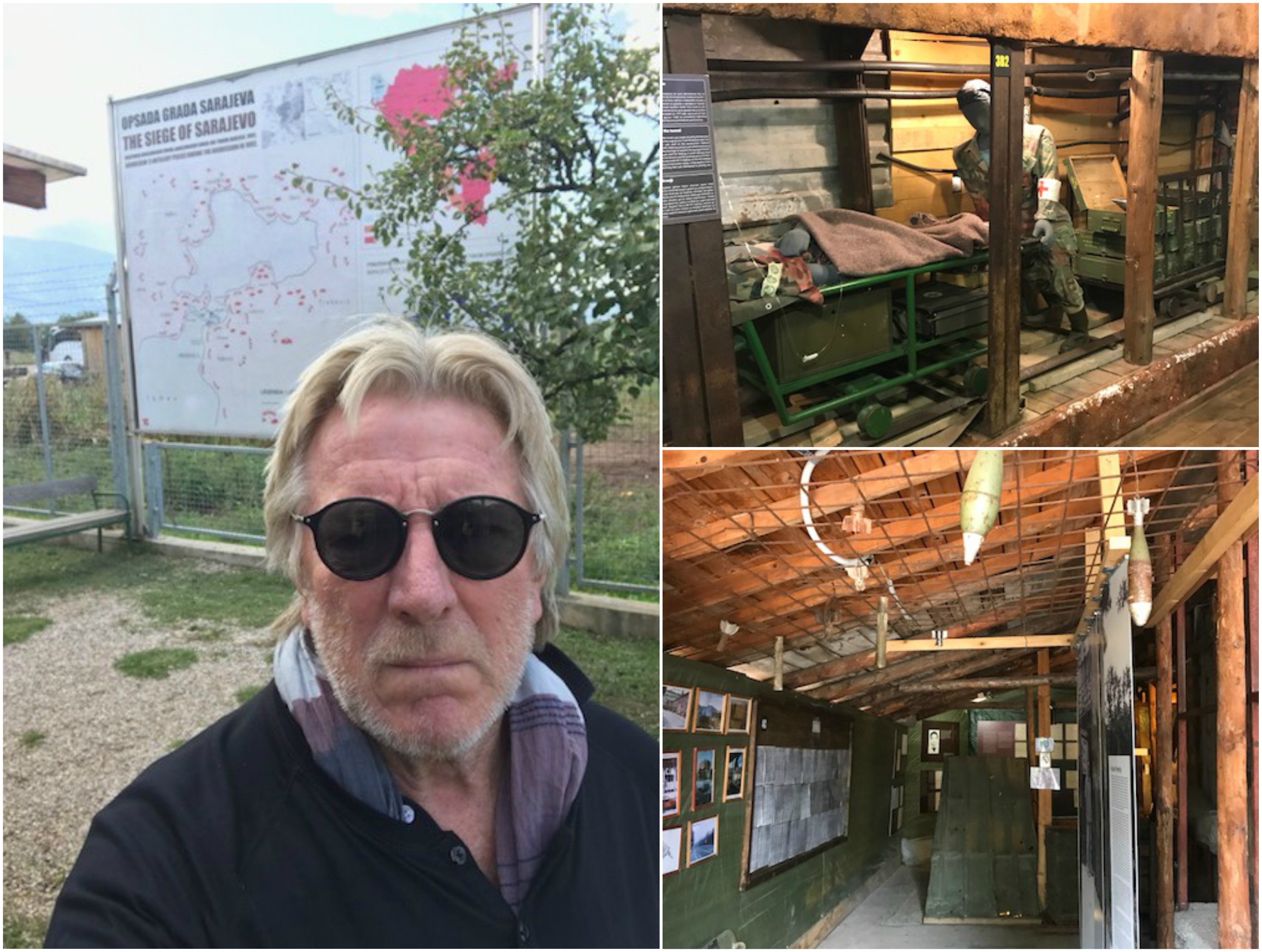
We stayed at Hotel Europe, delightfully central and reasonably priced, did an incredible walking tour with a local guide, and visited the old bazaar, Bascarsija. Sarajevo is unique in that in the same neighborhood, you can visit a Catholic cathedral, a mosque, an Orthodox church, and a synagogue. You can hear the call to prayer while walking through the city and listening to the church bells. Essentially, it is the story of the great Ottoman Empire. When you walk through the streets of Sarajevo, you can almost feel the pulse of tragedy, rebirth and the imprint of the centuries that have been left behind.

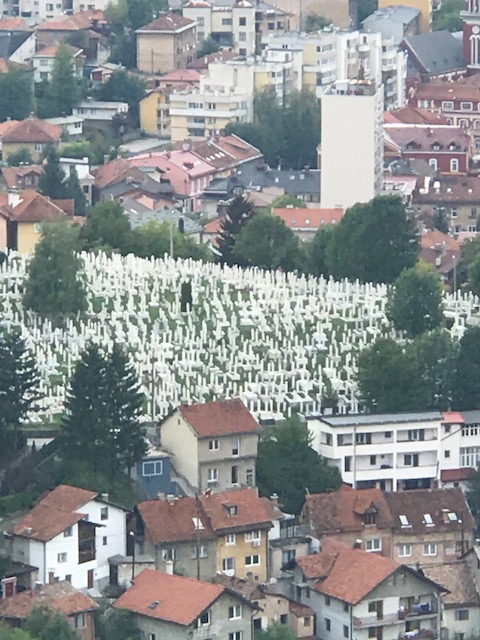
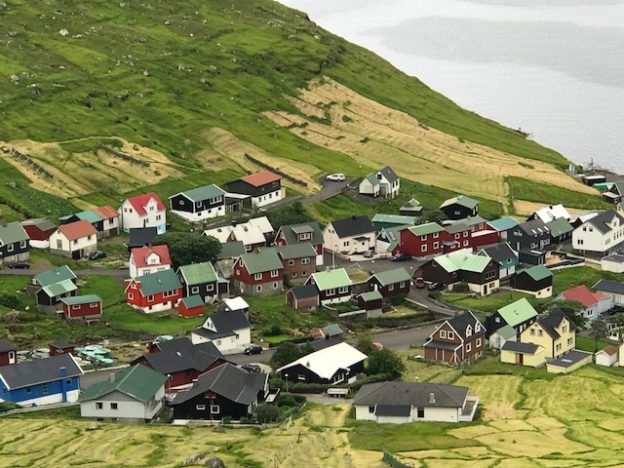
The Faroes have been compared to a grain of sand on a dance floor; impossible to find but a complete world onto itself once it is seen through a looking glass.
I was fortunate enough to travel for a few days in the Faroe Islands and stayed at the Hotel Føroyar in the capital, Tórshavn. It is like no other place I have been to.
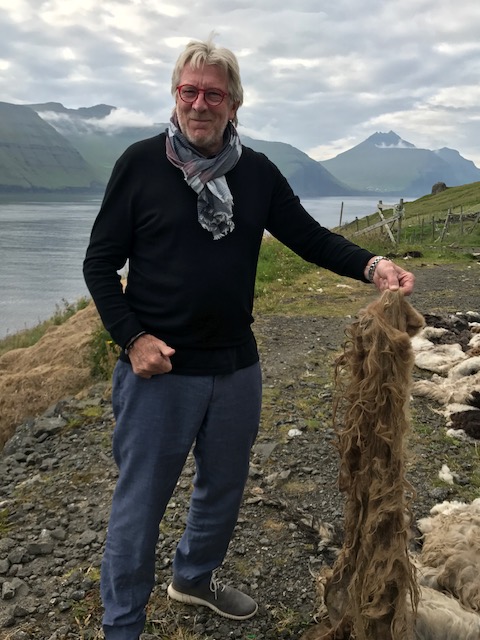
This is a land of 50,000 people and 70,000 sheep. There are two sub-sea tunnels, one Michelin Star restaurant in Tórshavn (Koks Restaurant), 62 churches, and one bridge crossing the Atlantic sea. It’s a land of temperate gulf current Atlantic waters, tons of puffin birds, and fabulous cuisine. It has only 840 sunny hours per year and rains most of the time. Stark but beautifully colored houses with grass growing on the rooftops are scattered across the landscape. The grass is used to keep the houses warm in both the winter and the summer!
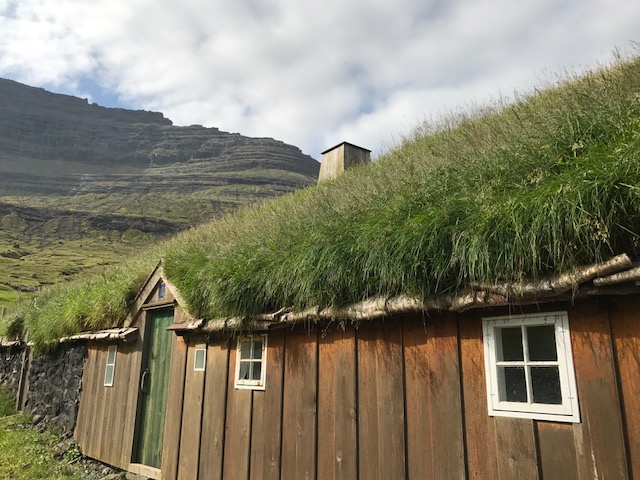
The Faroe Islands are known for its sheep and its fish. It’s very famous for its knitwear and wool was once the gold of the Faroe Islands. This archipelago also has one of the largest salmon fish farming industries in the world. In fact, much of the farm raised salmon we get in super markets and restaurants come from the Faroes.
The Faroes has its own language although everybody speaks Danish and English. Nothing is open on a Sunday – absolutely nothing including gas stations! The greatest discovery in the whole world on a Sunday in the Faroe Islands is the small but great café, Fríða Kaffihús. Service is a bit challenging but very friendly. But hey, it’s open.
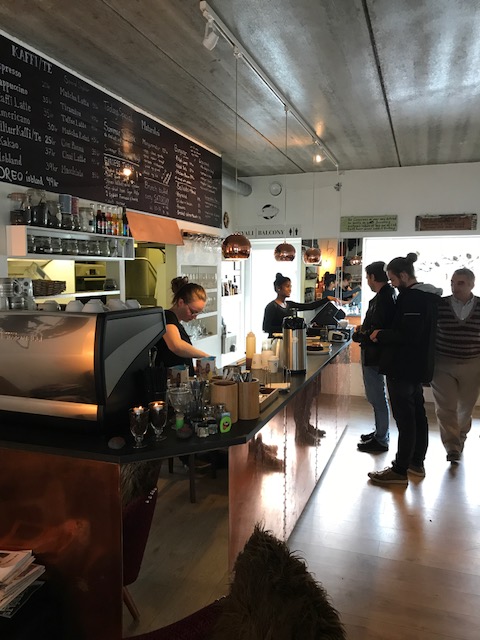
To get around the Faroe Islands, you need to rent a car, which is easy to do. Then each day you can set out to discover one of the 18 islands, most of which are connected to one another by tunnel or bridge. As I drove across the various islands, I started to notice trampolines everywhere. Unofficially, this must be the country with the most trampolines per capita in the world. Not saying that there is not a lot to do there…either that or some sales guy really had away with trampolines. In addition, the Faroese love to play soccer. They have a national team and they have had some big results in the past. Every tiny town dotted around the 18 islands has a decent size stadium. They like to drink beer and the craft beer industry is growing like crazy. As they are part of the EU, the young Faroese have access to the entire world of 26 EU countries to work.
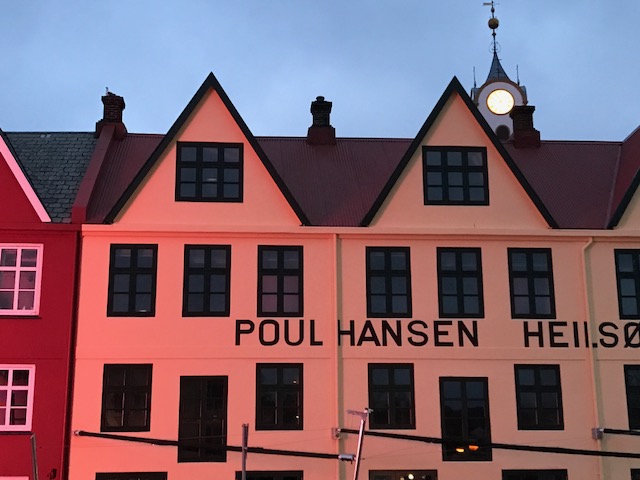
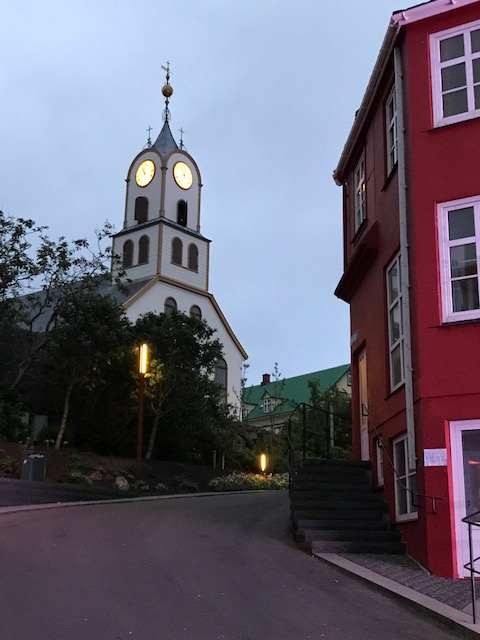
If you plan to visit the Faroe Islands, one suggestion I would make is to break up the different islands. It would be best to travel from Iceland to there and then finish with a few days in Copenhagen. It should also be noted that you can take a ferry from Scotland. But frankly, with the stormy Atlantic seas out there, I would rather fly if only to avoid sea sickness alone!
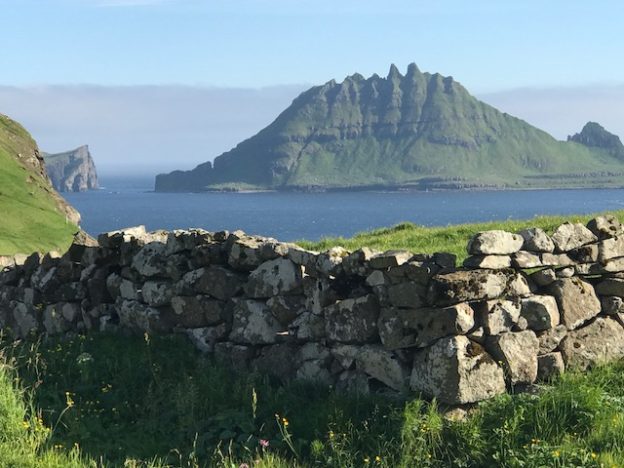
When I was a kid in the UK, I used to listen to the shipping forecast on the radio late at night. It felt cozy and reassuring when I was tucked in my bed and thinking of all these ships bobbing around in the harsh waters around the northern parts of the UK and beyond. It has become quite a famous institution in fact. At the London Olympics it was played along with Elgar’s Nimrod to denote Britain’s maritime heritage. There were updates of mysterious places like Tyne, Dogger, German Bight, Fair Isle and the Faroe Islands. I had no idea where most of these places were but like most youngsters in the UK, it became part of every Brits upbringing and it still beams out across the air waves today. This summer I decided to go visit one of these places; The Faroes. I had never been and had not much of a clue exactly where it was.
Getting there is not easy. Perched between the Outer Hebrides and the southeast tip of Iceland in the inhospitable waters of the Atlantic ocean, there is no direct service from London or many other European gateways. You can fly quite conveniently from Copenhagen or Reykjavik on SAS or Air Atlantic (the Faroe national carrier). We chose SAS and that was probably our first mistake in trying to get there.
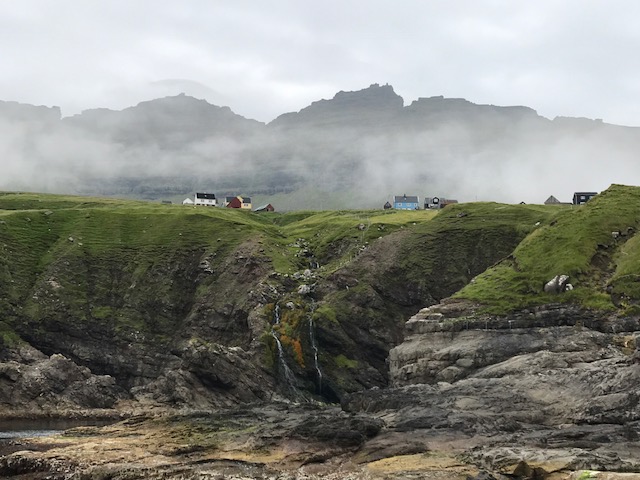
It’s a two hour and 30-minute journey from Copenhagen. The runway at Vágar Airport in the Faroe Islands is small. It was a cloudy day and when we finally arrived, after some delay, the pilot felt encouraged to make his descent. But the cloud cover ultimately was too much for him. As we descended, I felt the surge of the engines as he pulled out of the landing. After circling above for 10 minutes, he informed us he would have to go back to Copenhagen.
Yes, that really did happen.
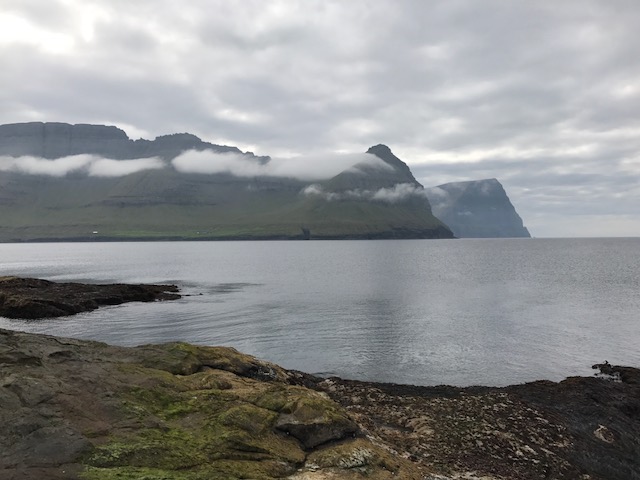
According to the locals, only travel on Air Atlantic as the Faroe pilots know how to land in cloud cover on a short runway. That was advice I wish I had earlier!
The next day we tried again. The weather was much better and the views were spectacular. As we descended, the archipelago of 18 islands suddenly appeared as we dropped onto what seemed to be a 50 yard runway that is cut into the edge of a steep cliff. We had made it and so the adventure began.
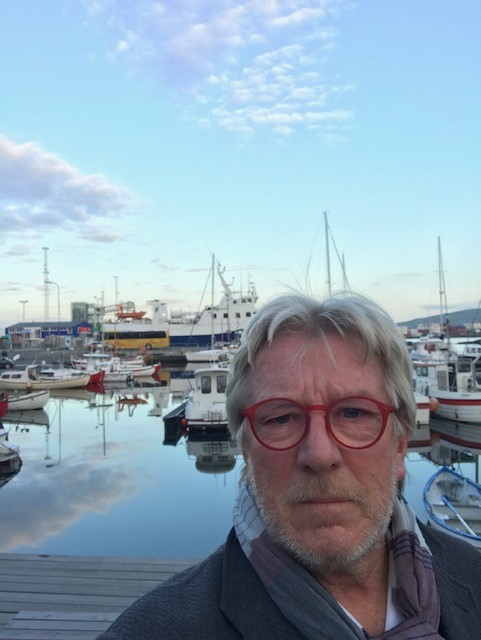
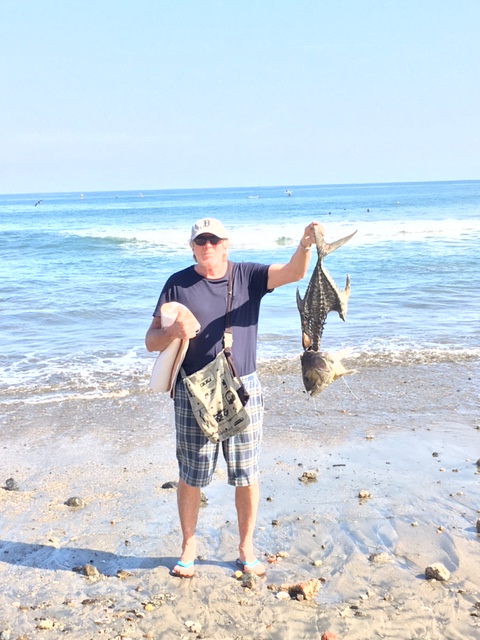
Famous for its beach break, Sayulita has a guaranteed supply of mixed level waves, perfect for the amateur and pro together.
It was first discovered in the 1960’s and was (and still is) a surfer’s paradise. The beach is a beautiful, huge crescent shape intersected by a river that seems to emanate from the jungle. Grazing by the river by an old plank bridge are horses and donkeys.
This is a town where the beach is the magnet. The beach is stacked in the center with surfboards, surf shops, and surf schools. You can rent everything from paddle boards to boogie boards. I sat under a very civilized umbrella easily rentable from Don Pedro – a restaurant come beach set-up where you can get fantastic grilled octopus and seared tuna.
Frankly, my idea of fun on a beach is to find a place like Don Pedro that sells umbrellas and lounge chairs and where I can get incredibly fresh and delicious seafood with a drink while watching other people do what I cannot do, namely surf and paddle board! So I watched expert surfers, beginner surfers (who wore beginner’s t-shirts), paddle boarders, body surfers, and just regular splashed types like me. At the far ends of the beach the fishermen and the pelicans went looking for their dinner. I’ve never seen so many pelicans diving in between surfboards in my life.
There are numerous tiny seaside accommodation places and at the end of the beach is a very nice, but not glitzy, hotel called Villa Amor which is where I stayed. Rooms range between $175-$300 per night for a one bedroom in high season. Sayulita is loaded with fantastic restaurants, taquerias, and a whole slew of funky bars that stayed open way after midnight. The crowd was mixed, cool, and very fit looking. Surfers usually are.
I love this place. The tiny shopping streets that stray off of the beach, the groovy restaurants, the mix of locals, old hippies, and newcomers. The beach had a freer feel to it.
If the beach was a spectacular white coral sand beach like the one in Cancun, it would have been ruined years ago with high-rises and packaged tours. This place never got there. A fiercely strong local citizenry protected it and the beach was funky enough to not pull the developers in. One of my favorite shops in Sayulita is Révolucion del Sueño which does an incredible trade with Zapata t-shirts made from beautiful soft cotton. My only tip to travelers who discover this place, don’t tell too many people.
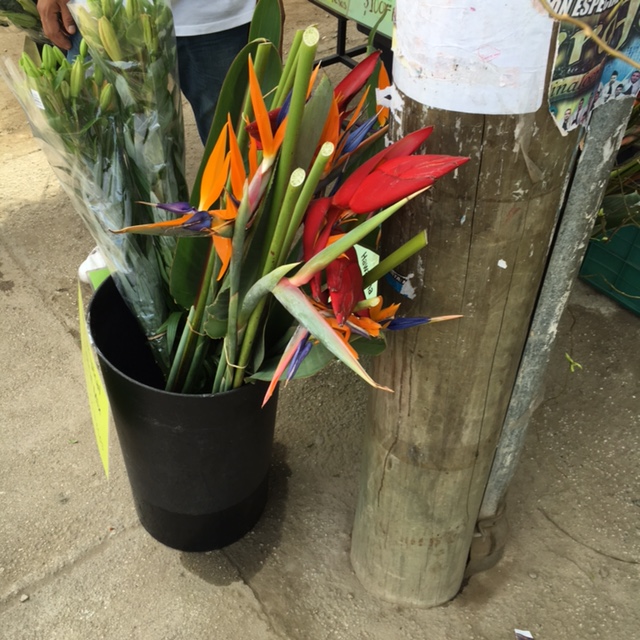
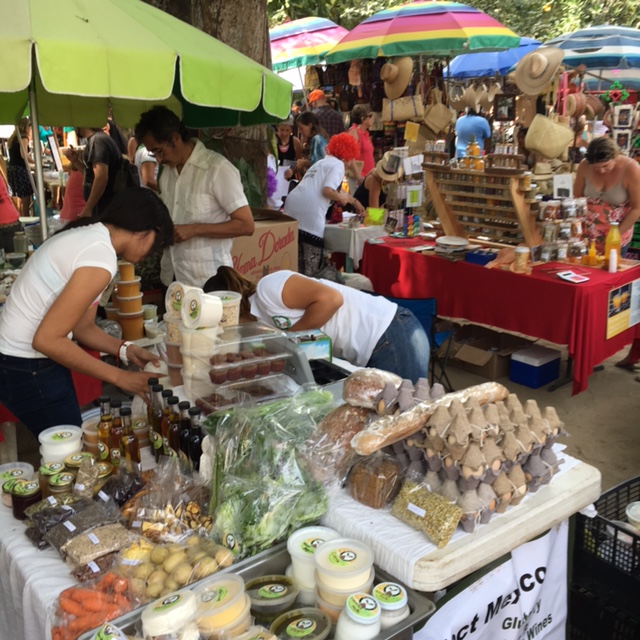

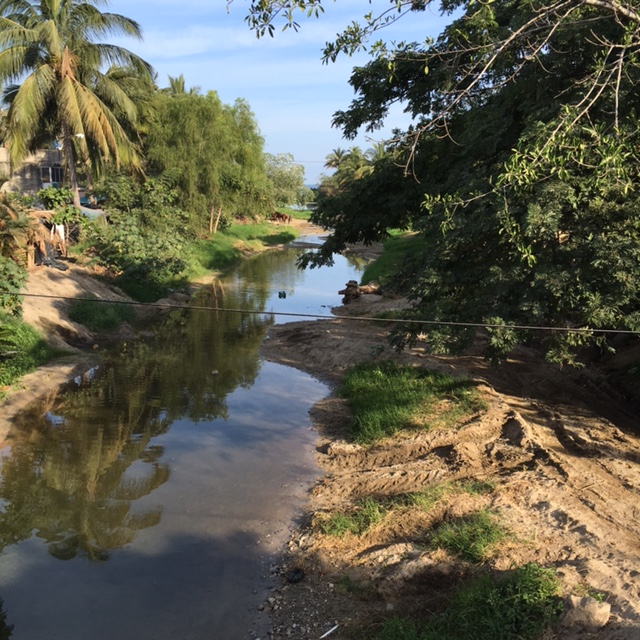
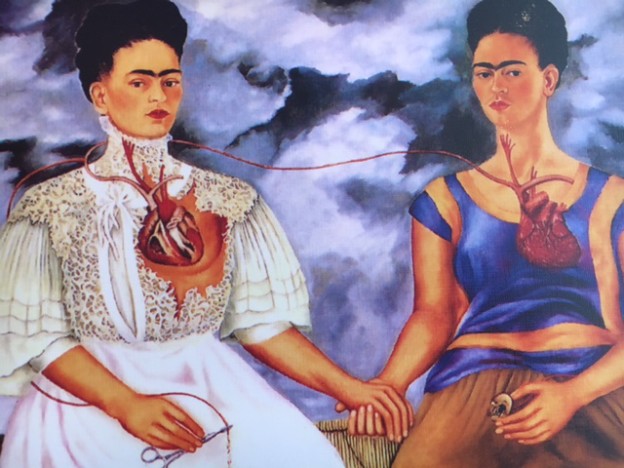
Yes, there are a few sketchy spots and it is probably not a great idea to grab a taxi from the street, but if you follow some basic rules, this city is rich in sights, restaurants, and beautiful parks. It is actually a safe city with people walking around at night. Even Uber is everywhere and I got to practically Uber my way around the city. Oh, and one last thing….it really is a great deal. Even the street food is healthy and nutritious.
There are issues. Drug cartels are out there. There are bad spots and a lot of bad publicity, but everyone knows the places in Mexico to avoid. It is really just like anywhere else.
But I have fallen in love with this place. Mexico has amazing coastlines from the Pacific Ocean to the Caribbean Sea. There are ancient sites, pyramids, incredible colonial architecture, Frida, Diego and food. It’s not just tacos and guacamole but there is a serious cuisine scene around.
A three night stopover in Mexico City is a great way to scope out the city. It can easily be combined with either the Yucatan or the Pacific Coast or you could really just spend the weekend in D.F.
Firstly, crime is down, the air is clean, and the architecture and the city have been reworked. There are bike paths, a great Metro, and it’s a pedestrian friendly city. I stayed along the Paseo de la Reforma, a wide avenue running diagonally across the heart of the city, and during the weekend, it was virtually traffic free with only bikes and pedestrians. It’s awesome. Second, the neighborhoods are cool too. Plan on visiting Roma, Condesa, Centro Historico and Coyoacán where both Frida and Diego lived. The Zócalo is the main square in the center of the city and is 57,500 square meters big; one of the largest city squares in the world. While there, imagine Tiananmen Square – it is that big. The square is the home to the Cathedral, the National Palace and the colonial arcade. To the south of the city is Xochimilco which is famous for its miles of canals and lakes and the trajineras, the boats that drift like gondolas laden with tourists and vendors.
Third, there are so many museums and national sights to see. At Casa Azul, the Frida Kahlo Museum, you get to see Frida Kahlo’s genius firsthand. This was Frida’s home where her life both began and ended. She and her husband, famed painter Diego Rivera, are all around you. In addition, this is the neighborhood where Leon Trotsky lived in exile from the Soviet Union during Stalin’s leadership. He had been befriended by Kahlo and Rivera.
Located in Xochililco is a true gem – Museo Dolores Olmedo. This was donated to the state after her death and the house and gardens are a spectacular – filled with peacocks and the famous hairless Mexican dogs. The museum has a collection of 140 Rivera pieces and a number of works by Kahlo and Angelina Beloff. It is accessible easily by Metro and is a must see.
Chapultepec Forest holds Mexico’s version of Versailles, the grand Chapultepec Castle. It is also close by to the National Museum of Anthropology, one of the world’s greatest art and artifacts museums.
Finally, there’s history and of course there are the pyramids outside of the city in the zone of the Teotihuacan. These are the largest pyramids outside of Egypt.
So my only question is, why not go to Mexico City? It’s got it all and it is at a price point that just makes sense.
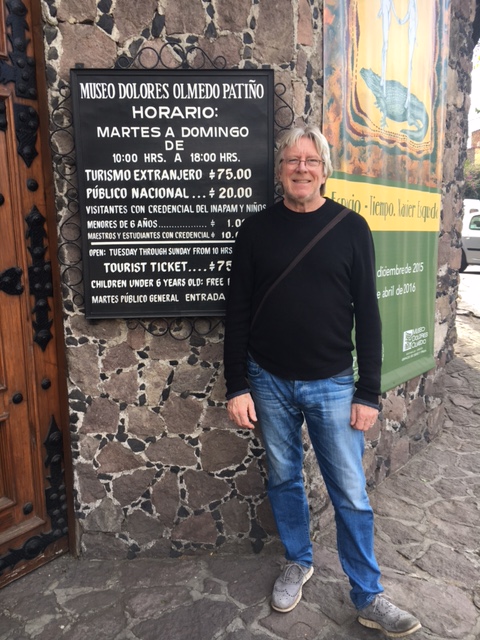

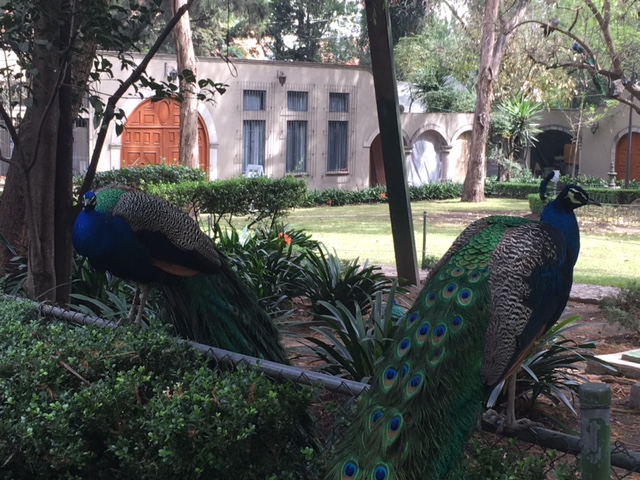
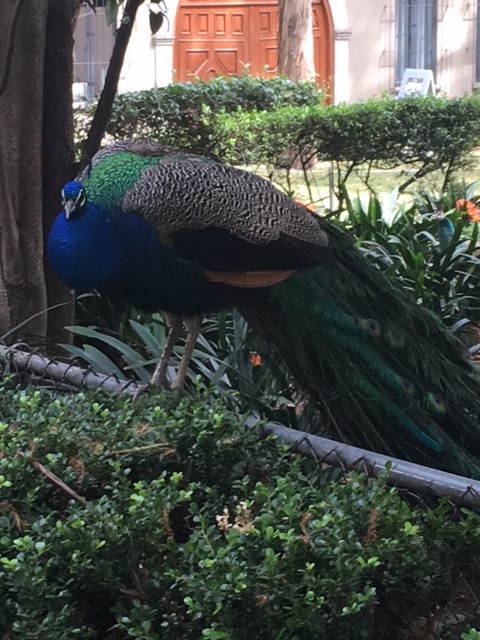
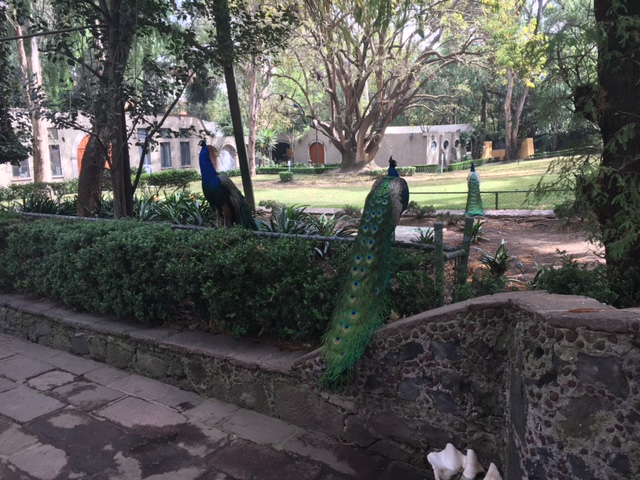
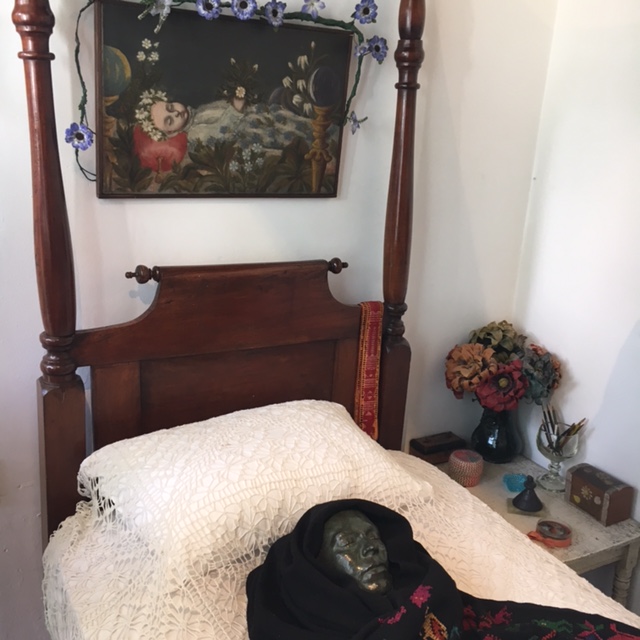
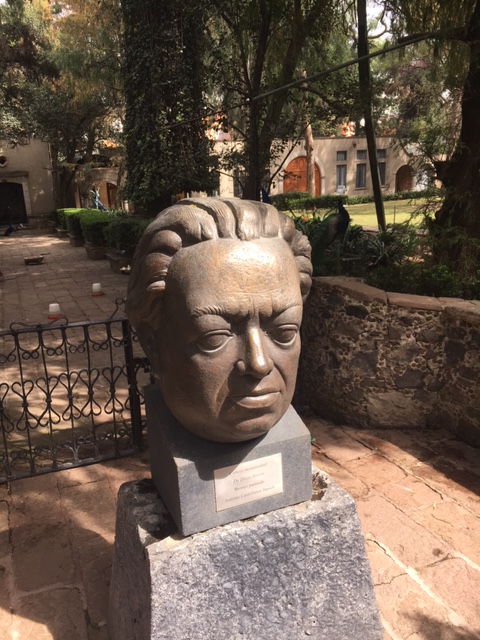

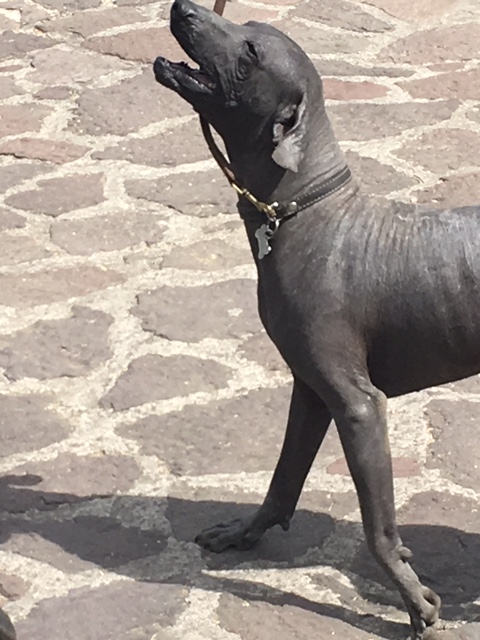
I’ve followed up my insiders’ guide to Ashland, Massachusetts, with a tour of my second adopted home-town: Boston!
A lot has changed in Boston over the past few years, (hello, artisan coffee and cheese) but one thing remains the same: this city dominates in athletics. Whether your an superjock or a sensualist, Boston is ready for you!
Don’t forget to subscribe to my YouTube channel for Pietro Place in Boston, Massachusetts and dozens of other video blogs!
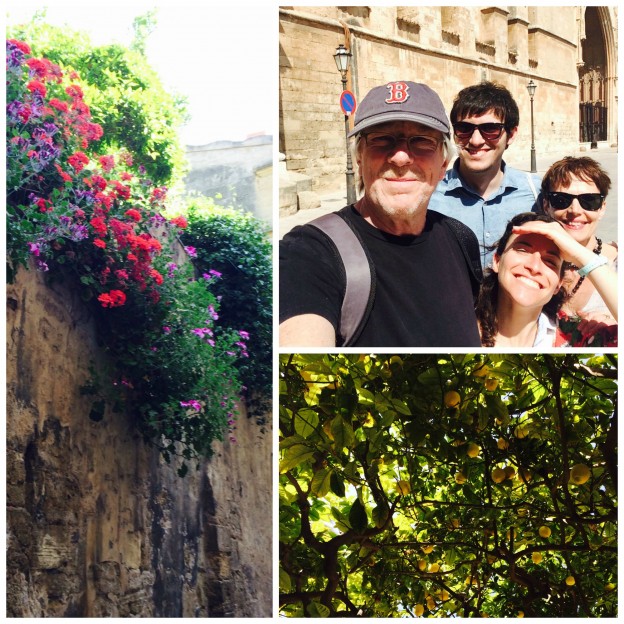
I had many misgivings about visiting Mallorca mostly because it brought up images of holiday charters from the UK and Germany, full of pasty skinned tribes of beer drinkers and football shirts! It is the largest of the Balearic Islands, sitting just off the coast of Spain, equidistant between Valencia and Barcelona, and has been a holiday retreat for the Brits and the Germans for many years. However, my dear friend had bought a house in the northern part of Mallorca some years ago and had sent back wonderful reports. Maybe this island was not quite the Costa Blanca nightmare that I had imagined. It was time to investigate.
Its sister island, Ibiza, is party central. That old expression about Las Vegas surely applies to this place as well. If Ibiza is sex, drugs, and rock and roll, then Mallorca, from what I had heard, was fish and chips and lager with not much Spanish required.
First and foremost, Mallorca is easy to get to. Flights from London are plentiful and flights from most other European countries are relatively easy although they require a stopover in Barcelona or Madrid. There is also a ferry service from Barcelona to Palma de Mallorca. But the cost of the ferry versus the speed and cheapness of the flight makes that a less desirable option unless you do not like to fly.
When we arrived in Palma, we had some concerns. Ten charter flights were in the process of being cleared and every single one of them was a German charter plane. Maybe the Brits had moved out but the Germans had moved in. They like their lager just as much as the Brits do.
The drive from the airport to the center of Palma was easy and we were able to pass along the harbor which was jammed with very expensive boats that reminded me of the setup in Marbella in southern Spain. The first iconic sight that we caught was the Palma Cathedral up on the hill. It is a beautiful yellow ochre stone structure which dates back to 1300 A.D. It’s a fantastic sight with its flying buttresses and a Renaissance portal, and it towers above the city and the port below. Inside, there are designs by Antoni Gaudí and the renowned Contemporary artist, Miquel Barceló. It just is not what you would expect
We checked into the hotel and headed straight back towards the cathedral and to the beautiful lanes that make up this old city. For me, the wonders of Spain are the influences of the Moors. In southern Spain, the jewels of Seville, Cordoba, and Granada and the white villages that served as fortresses all the way to Jerez de la Frontera, leave us with a spectacular snapshot of a civilization that brought literacy and learning to this country. Palma has been occupied since the Roman times. By the 12th century however, Medina Mallorca was one of the most flourishing Muslim capitals in Europe. After the re-conquest in the 13th century, it prospered as one of the great cities in Spain. The language here is first and fundamentally Mallorquin; a dialect of Catalan. Although English and German are widely accepted as well as Spanish!
We visited the Banys Arabs that were nestled in the old lanes. Although small in size, these Arabian baths are the most important survivors of the Muslim settlement. They are quite charming and were probably attached to a private house. It is a paid entrance but the gardens that surround the baths are a delightful place to sit, read, and imagine the great history of that era. Out and about and into the lanes a little more, we grabbed some almejas and manchego before walking back along the port to the hotel.
Palma is indeed a livable city. This is a gorgeous climate and beautiful Mediterranean colors pop up everywhere across the island. Bougainvillea and oleander provide reds, pinks, and whites alongside the old buildings, and the scent of orange blossom was still hanging in the air. There is good transportation inside of the city including running trails and bike trails that reminded me of the promenade along Copacabana. There are beautiful beaches just a few kilometers to either side of the harbor.
I have new thoughts on Mallorca, all in all, it really did take me by surprise. I never once found a fish and chip shop and never saw an English football fan in a Liverpool shirt (thankfully) but it had a buzz to it. We booked our restaurants every night at 10:00 pm and bars stayed open until the early hours without giving the impression of disco mania. Mallorca clearly had conceded that title to Ibiza. Tomorrow we would investigate some other parts of the island but today I sort of fell in love with the place and could not wait for my next date.